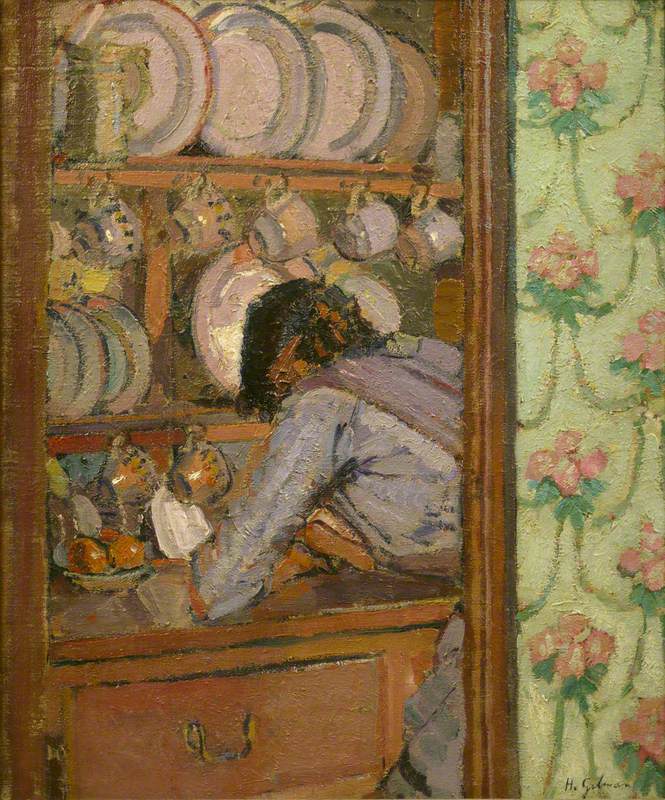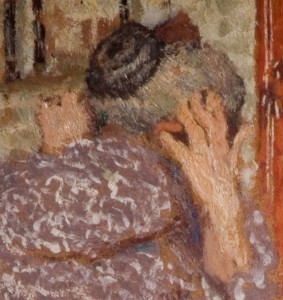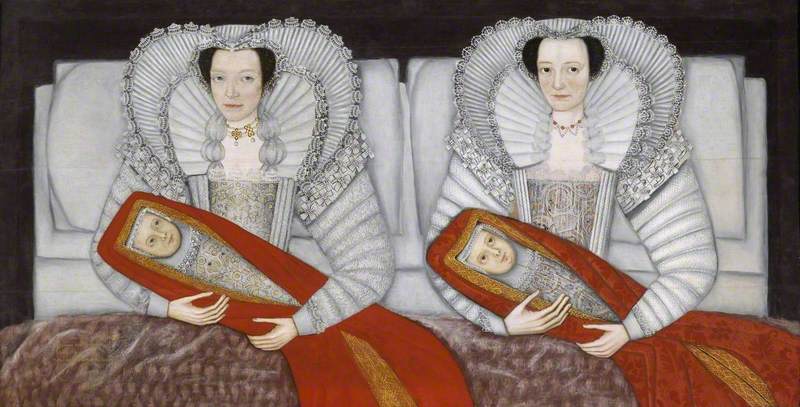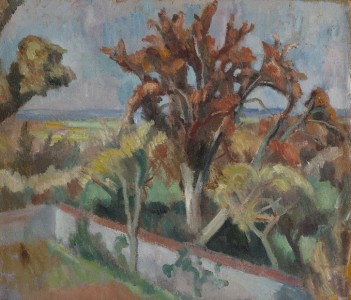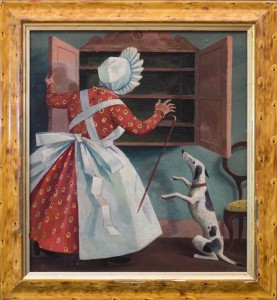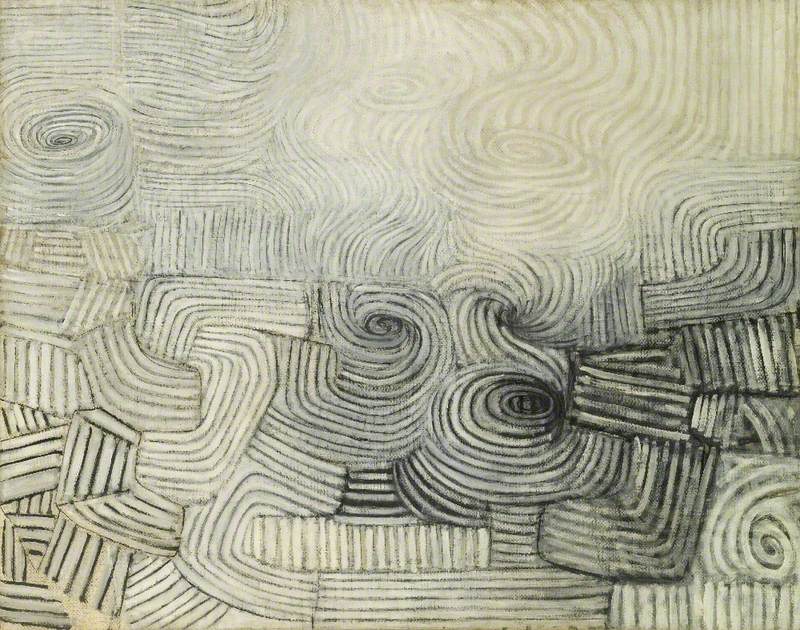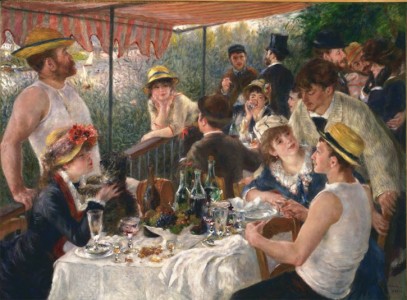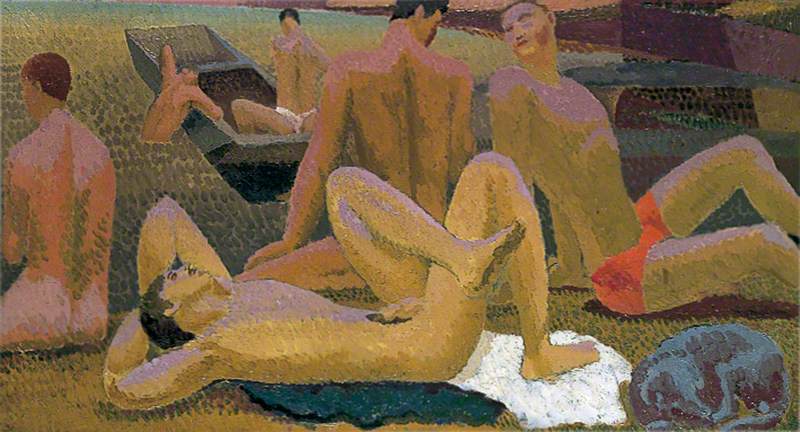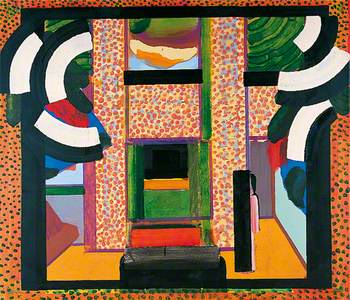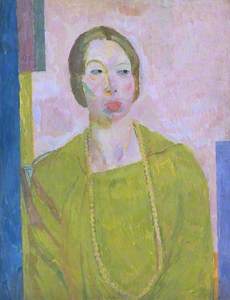This year a significant oil painting by Jean-Édouard Vuillard joins Pallant House Gallery's collection of British and international modern and contemporary art, allocated via the Arts Council's Acceptance in Lieu (AiL) scheme from the estate of Jeremy Hutchinson, Lord Hutchinson of Lullington.
At a time when so much in politics seems to be about Britain cutting ties with Europe, the acquisition of this remarkable painting reminds us how closely British art has been connected to European influences. Though Pallant House Gallery is most celebrated for its collection of modern British art, it is impossible to tell its story fully without taking into account the exchange of ideas, knowledge and influence with artists on the continent. Our collection includes work by artists including Paul Cézanne, Edgar Degas, André Derain, Pablo Picasso and Gino Severini, allowing us to explore the international connections with British art that have shaped twentieth-century art history on both sides of the channel.
Modèle assise dans un fauteuil, se coiffant / Model Seated in a Chair, Combing Her Hair
c.1903
Jean-Édouard Vuillard (1868–1940) 
Édouard Vuillard (1868–1940) was an important influence on the development of modern British art, in particular the artists Walter Sickert and Harold Gilman, subjects of two major exhibitions at Pallant House Gallery in recent years. The acquisition of Vuillard's Modèle assise dans un fauteuil, se coiffant (c.1903) provides an exciting opportunity for us to explore shared themes of memory, modernity, the interior and the feminine space in future displays.
Painted in 1903, the painting, translated as Model seated in a chair, combing her hair, depicts a brunette model in Vuillard's studio in Rue Truffaut in Paris, where his mother ran a family sewing business. Dressed in a white petticoat and black stockings, with her dress laid out alongside, she sits beneath a patterned swathe of fabric that is fixed to a shelf loaded with portfolios of drawings. She is absorbed in the act of combing her hair and appears unconscious of the presence of the artist or the gaze of the viewer.
The intimacy of the pose and subject of the figure in an interior resonate with another significant work in our collection – a drawing by Edgar Degas Femme se peignant (Woman combing her hair) (c.1887–1890), also allocated through the AiL scheme, in 2016. Degas was himself a major influence on Vuillard.
Additional resonances can be found with several other works: Walter Sickert's Jack Ashore (1912–1913), a much later work by R. B. Kitaj entitled Girl braiding her Hair (1999), and Grantchester Road (1975) by Howard Hodgkin, who described himself as a 'fanatical admirer' of Vuillard.
Vuillard began his career in a period when many artists in France were exploring new and radical approaches in reaction to the perceived realism of Impressionism. Initially he was part of the group of painters known as Les Nabis, which included Pierre Bonnard and Maurice Denis, inspired by Paul Gauguin's synthetism and his use of simplified form, flat, exaggerated colour.
The domestic interior scenes of the 1890s presented a private world for Vuillard: his mother's business as a corsetmaker and dressmaker provided subject matter for his paintings – the enclosed spaces for which he became known. Vuillard's world was one infused by the feminine, depicting textured interiors of fabrics and wallpaper in which men rarely appear.
Towards the end of the first decade of the new century, he would begin to adopt a more traditional, realistic approach and a wider range of subject matter, engaging with the modern world and its masculine dimension; however, his works remained imbued by an underlying theme of evocation of space, a presence or feeling.
The previous owner of the painting was Jeremy Hutchinson (1915–2017), QC, a fascinating figure in twentieth-century British cultural life through his role in landmark trials: such as the 1960 Lady Chatterley's Lover censorship trial, and his defense of Christine Keeler, the art thief Kempton Bunton, the 'Great Train Robber' Charles Wilson and the Soviet spy George Blake. His mother, Mary Hutchinson, had been part of the Bloomsbury Group – the cousin of author Lytton Strachey and the lover of the critic Clive Bell. She was memorably painted by Clive's wife Vanessa Bell (a portrait she described as being 'perfectly hideous').
She and her husband St John Hutchinson collected paintings by Derain, Matisse, and Marchand, passing on their love of art to their son Jeremy, who became a passionate promoter of the arts, becoming a trustee and later Chairman of the Tate Gallery from 1980 to 1984 as well as Vice-Chairman of the Arts Council of Great Britain from 1974 to 1979.
Pallant House Gallery was chosen by the recipient of Lord Hutchinson's estate to receive this work in lieu of Inheritance Tax through the AiL scheme. The deal was brokered by Sotheby's.
Simon Martin, Director of Pallant House Gallery





